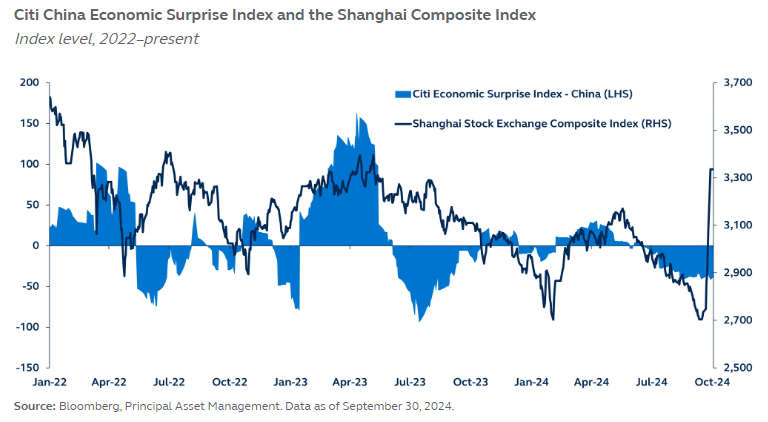China: Is this the “whatever it takes” moment?
China's recent stimulus measures, including monetary easing and a massive fiscal pledge, have sparked a sharp rally in equities, particularly in real estate and consumer staples. While market sentiment has improved, the long-term impact will hinge on the actual scale and execution of fiscal policy. Investors are cautiously optimistic, but much depends on how effectively China targets its property sector and broader economy.

Amid concerns that China may fall short of its 5% GDP growth target this year, policymakers have introduced a significant package of monetary easing measures. These include cuts to mortgage rates, reduced down payment requirements, and the creation of an RMB 800 billion liquidity pool aimed at stabilizing equities, all designed to bolster the real estate sector and financial markets. Alongside these efforts, there is a strong commitment for further fiscal stimulus, with reports indicating 2 trillion yuan earmarked to boost consumption and another 1 trillion yuan to recapitalize banks.
If the reports are correct, the nominal size of the stimulus could be among the largest ever in history. Markets have reacted forcefully — the Shanghai Composite rallied over 23% from its September lows, with consumer staples and real estate stocks among the key beneficiaries. The renminbi also further strengthened against the dollar, with Chinese government bond yields rising on the back of the announcement.
The long-term effectiveness of the announced measures will largely hinge on the specifics of the fiscal policy that is ultimately implemented. A well-targeted fiscal stimulus, aimed at rejuvenating the property sector and reviving animal spirits, could significantly improve China’s economic prospects, potentially generating positive spillovers for the global economy. While investors have reason for cautious optimism, much will depend on the size and implementation of the various measures, details of which are still pending.

